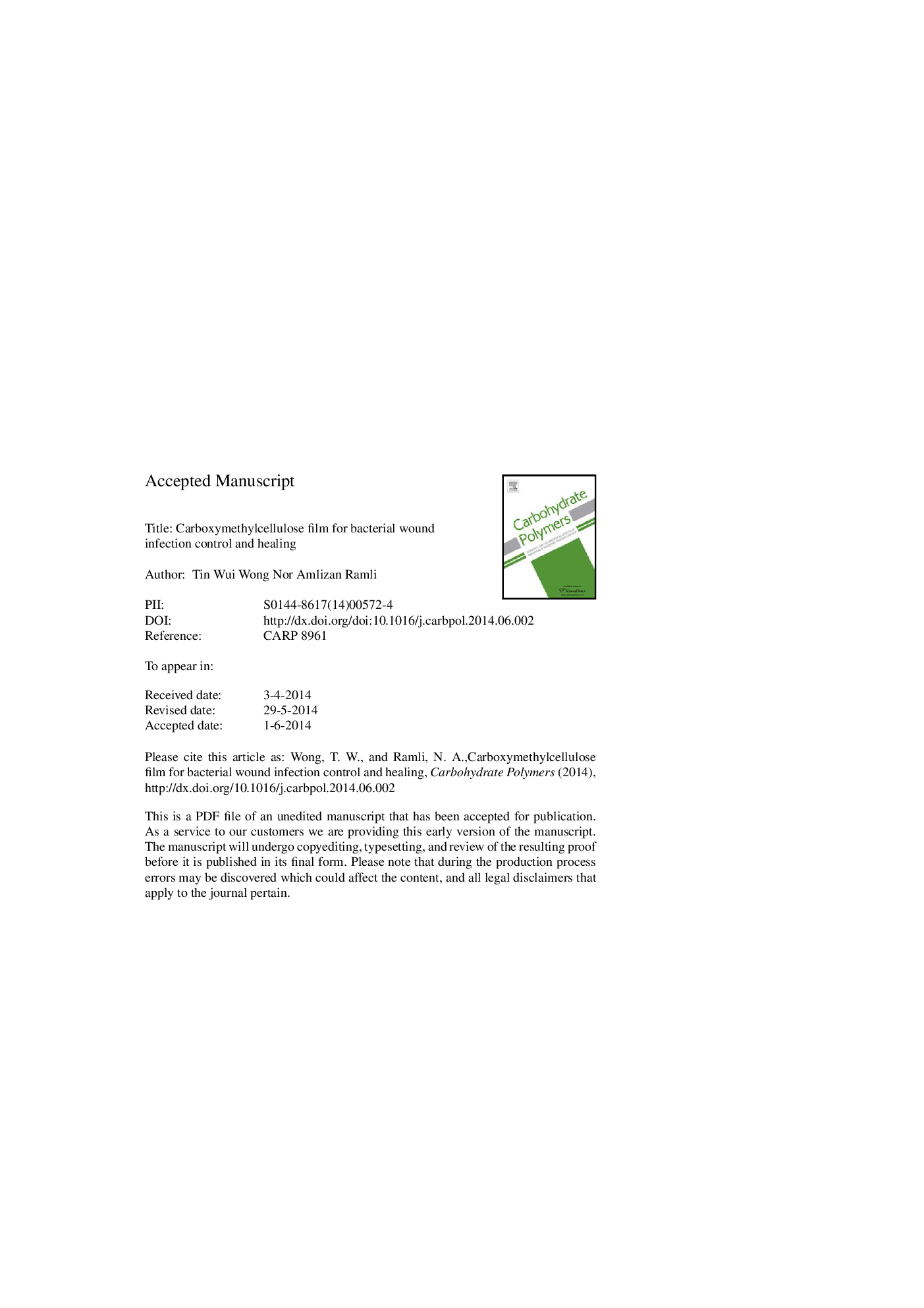| Article ID | Journal | Published Year | Pages | File Type |
|---|---|---|---|---|
| 7791313 | Carbohydrate Polymers | 2014 | 36 Pages |
Abstract
Infection control and wound healing profiles of sodium carboxymethylcellulose (SCMC) films were investigated as a function of their anti-bacterial action, physical structures, polymer molecular weights and carboxymethyl substitution degrees. The films were prepared with in vitro polymer/film and in vivo microbe-colonized wound healing/systemic infection profiles examined. Adhesive high carboxymethyl substituted SCMC films aided healing via attaching to microbes and removing them from wound. Pseudomonas aeruginosa was removed via encapsulating in gelling low molecular weight SCMC film, whereas Staphylococcus aureus was trapped in tight folds of high molecular weight SCMC film. Incomplete microbe removal from wound did not necessary translate to inability to heal as microbe remnant at wound induced fibroblast migration and aided tissue reconstruction. Using no film nonetheless will cause systemic blood infection. SCMC films negate infection and promote wound healing via specific polymer-microbe adhesion, and removal of S. aureus and P. aeruginosa requires films of different polymer characteristics.
Related Topics
Physical Sciences and Engineering
Chemistry
Organic Chemistry
Authors
Tin Wui Wong, Nor Amlizan Ramli,
